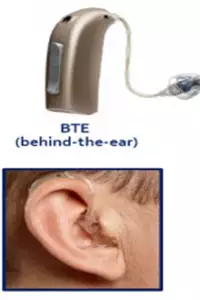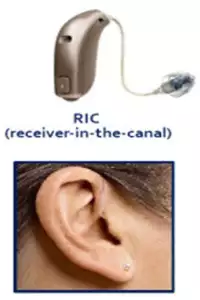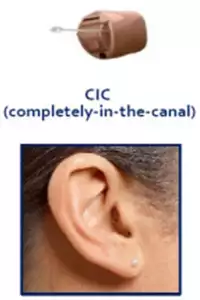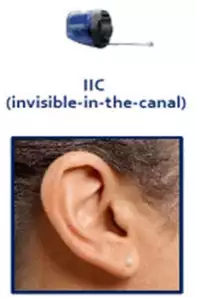- Behind the ear (BTE)
- Receiver in the ear (RITE) receiver in canal (RIC)
- In the ear (ITE)
- Completely in the canal (CIC)
- Invisible aids
BTE hearing aids are traditional type hearing aids, they are usually fitted with an earmould that fits snugly inside your ear, while the rest of the aid rests behind your ear. They were the most powerful hearing aids available however, in the recent past some manufacturers have released custom or ITE hearing aids that are nearly as powerful. The need for an earmould has also changed in some cases, now BTE hearing aids can be fitted with ‘open ear fitting’ which is a small, soft earpiece at the tip of the tubing instead of an earmould. This type of fitting can be less noticeable than an earmould but is only suitable if your hearing loss is mild or moderate. Open fitting also delivers a very natural sound.
Receiver in-the-ear (RITE) or receiver in canal (RIC) aids are BTE type hearing aids that are often much smaller than traditional BTE aids. The manufacturers move the receiver (speaker part of the device) to the end of a wire connection in the ear canal. Some manufacturers call them RITE hearing aids, some call them RIC hearing aids, in essence they are the same thing. These hearing devices are exceptionally versatile as receivers with different levels of power outputs can be added to them. Which means the devices can be suitable for almost any hearing loss. Normally these devices are fitted with a soft earpiece but they can be fitted with custom tips to ensure comfort and retention. If your hearing loss is severe, you may need a type where the receiver sits in a custom earmould.
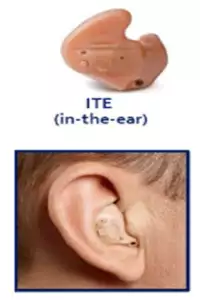 As the name suggests these are custom made hearing aids that fit entirely into your ear. They come in various shell sizes and will hold various batteries depending on the shell size. As I said earlier, some manufacturers have made these devices far more powerful in the recent past and some are now suitable for even the most severe hearing loss. ITE aids tend to need repairing more often than BTE aids and RIC/RITE hearing aids may actually be more discreet options.
As the name suggests these are custom made hearing aids that fit entirely into your ear. They come in various shell sizes and will hold various batteries depending on the shell size. As I said earlier, some manufacturers have made these devices far more powerful in the recent past and some are now suitable for even the most severe hearing loss. ITE aids tend to need repairing more often than BTE aids and RIC/RITE hearing aids may actually be more discreet options.
Appointments
All patients are seen on an appointment basis. Should you wish to make a booking, please contact our receptionists on
(011) 482-5530 and they will assist you in finalising a suitable date and time,
Alternatively, click on the button below.




